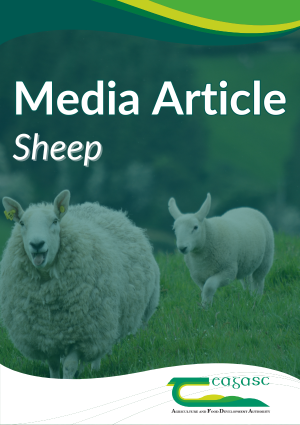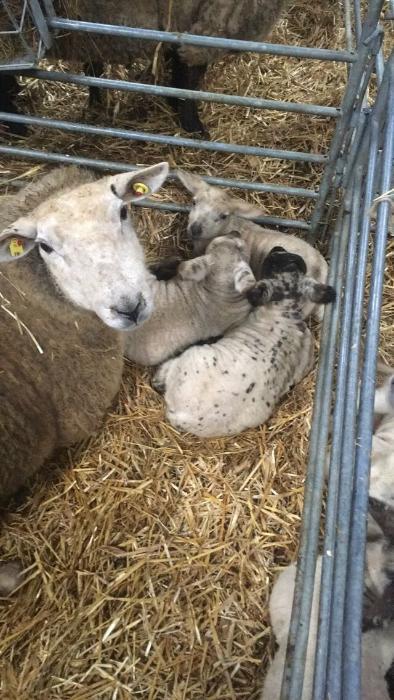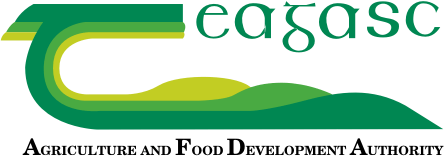
Preparing for the 2025 Lambing Season
Preparing for the 2025 Lambing Season 06 January 2025 Type Media Article By Padraig Glynn, B&T Drystock Adviser, Teagasc Galway/Clare Lambing is just around the corner for many sheep famers, and it is undoubtedly the busiest time of year on these farms. Preparation for lambing is crucial to ensure high lamb survival, reduced morbidity and […]
By By Padraig Glynn, B&T Drystock Adviser, Teagasc Galway/Clare

Preparing for the 2025 Lambing Season
Type Media Article
By Padraig Glynn, B&T Drystock Adviser, Teagasc Galway/Clare
Lambing is just around the corner for many sheep famers, and it is undoubtedly the busiest time of year on these farms. Preparation for lambing is crucial to ensure high lamb survival, reduced morbidity and an efficient workload this during this busy period. Some of the main factors that should be considered when preparing for lambing, to ensure a successful lambing season are as follows;
Nutrition
75% of foetal growth occurs in the last six weeks of pregnancy. Adequate ewe nutrition during these last 6 weeks is essential to ensure appropriate lamb birthweight and colostrum supply. Ewes that are underfed in pregnancy will deliver lighter lambs, produce less colostrum and milk will be of a poorer quality. These smaller lambs are more prone to infectious disease and illness.
There are four main factors, which must be considered when assessing the diet of ewes pre-lambing; scanning results, stage of pregnancy, the body condition score of the ewe and the quality of the forage available.
Scanning is essential to know how much supplementary feeding each ewe requires pre-lambing. Dividing the ewes into triplets, twins and singles will make feeding the correct amount of concentrates to each ewe possible. A ration made up of good quality grains such as barley, wheat and maize alongside a protein source such as soya bean meal is advised. This will ensure both the energy and protein requirements of the pregnant ewes are met. Mineral supplementation should also be provided.
|
Concentrate Feeding to Ewes in Late Pregnancy (last 8 weeks) |
||||||||
|---|---|---|---|---|---|---|---|---|
|
Weeks Before Lambing |
8 |
7 |
6 |
5 |
4 |
3 |
2 |
1 |
|
*Singles |
|
|
0.1kg |
0.2kg |
0.3kg |
0.4kg |
0.5kg |
0.6kg |
|
**Twins |
|
0.1kg |
0.2kg |
0.3kg |
0.4kg |
0.5kg |
0.6kg |
0.7kg |
|
***Triplets |
0.1kg |
0.2kg |
0.3kg |
0.4kg |
0.5kg |
0.6kg |
0.75kg |
0.9kg |
*Typical Meal feeding programme – Based on ewes provided with good quality silage, 70% DMD, and a Body Condition Score of 3.0
Body Condition of Ewes
Ensuring ewes pre-lambing have a minimum body condition score (BCS) of 3 with a preferred BCS of 3.25 at lambing is optimal. Ewes with a BCS less than 3 should be fed extra concentrates from mid to late pregnancy to increase their BCS prior to lambing. Ewes with the correct BCS will outperform ewes with a low BCS as they will have a better supply of quality colostrum, while their lambs will also be more vigorous at birth.
Colostrum
Colostrum provides newborn lambs with essential nutrition, acts as a laxative and also provides antibodies to protect against disease. Every lamb should receive 50ml/kg birth weight of ewe’s colostrum in the first 4 hours of life. Therefore, a 5kg lamb will require 250 ml of colostrum in this initial time period, which should be repeated every 6 hours. Lambs should not be given half feeds of colostrum, as this will led to the closure of their gut wall, and reduced absorption of essential antibodies which are needed to develop their immune system. Alternative types of artificial colostrum are available and should be on hand during lambing, however it should only be used if no natural colostrum is available.
Housing
Ensuring adequate trough space is available to each ewe is vital to ensure all ewes get access to their fair share of concentrates and prevent bullying at the feed face. The table below outlines the different trough space requirements depending on the size of ewes. These requirements should be calculated and compared to what is available in the housing space.
|
Type of Ewe |
Slats m2 |
Bedded m2 |
Meal Feeding mm |
Roughage |
|---|---|---|---|---|
|
Large – body weight 90kg |
1.2 |
1.4 |
600 |
200 |
|
Medium – body weight 70kg |
1.1 |
1.2 |
500 |
200 |
|
Small – body weight 50kg |
1 |
1.2 |
400 |
175 |
Prior to housing, lambing sheds should be washed and disinfected. The ewes should be kept as clean as possible at lambing while housed. Ensuring adequate straw is used for bedding will help limit ewes having dirty udders at lambing time the spread of disease. Individual pens should be setup, disinfected and bedded so that they are ready for use when the ewes start to lamb. This is vital for the ewe to bond with her lamb, and to reduce the risk of the lambs acquiring infections.
Products Required
Products needed during lambing are advisable to purchase before lambing starts, to ensure supply and avoid unnecessary rushing during the busy period. It is essential to have items such as; disposable lambing gloves, lubricant, iodine, lambing ropes, fostering crates, antibiotics, a thermometer, syringes, needles, calcium injection, glucose, colostrum, bottles, teats, stomach tubes, jug, water/feed containers, disinfectant for pens, and marking spray. Being organised in the lambing shed will help ease the stress of managing ewes and lambs, while preparation will hopefully lead to a successful lambing season in 2025.

